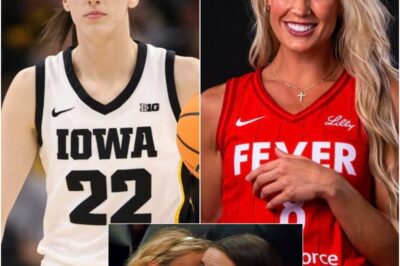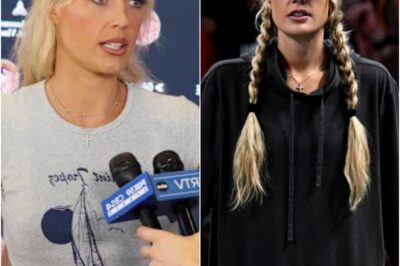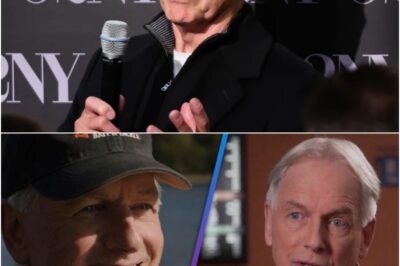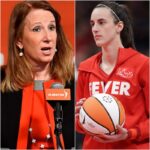 They built an entire system to keep her on the sidelines.
They built an entire system to keep her on the sidelines.
And for a while, it worked.
Before the ticket lines.
Before the network bidding wars.
Before the leaked emails.
There was just Caitlin Clark — a rookie. A name on the rise. A flash on the court. And to most inside the league, a useful distraction.
But then the numbers came in.
She never asked for anything. Never raised her voice. Never grabbed a mic.
She just kept playing.
And quietly, she triggered a billion-dollar shift no one could stop.
The silence inside WNBA boardrooms wasn’t strategy. It was fear.
It began in June. Amazon had just renewed its streaming deal for WNBA coverage — a multiyear agreement with flexible override clauses. Two internal sources confirmed the new metrics included something called “CC-driven engagement.”
Caitlin Clark wasn’t just a draw anymore. She was the lever. The force multiplier. The thing moving the money.
ESPN followed with a mid-season ad restructure proposal. The writing was on the wall.
Clark wasn’t the future of the league. She was the only thing keeping it from falling behind.
Inside the July 3 board meeting, no one said her name. That’s what made it so strange.
One exec described the mood like this: “It was like someone had already rewritten the rules, but no one wanted to admit they hadn’t been invited.”
Forty-one minutes of “restructuring talk.”
No names.
No faces.
Just a room full of people negotiating a reality they hadn’t built — but now had to serve.
That same day, an internal directive went out. Marketing plans for Q3 and Q4 would be “reassessed for alignment.”
Translation: If she’s not in it, kill it.
No one pushed back.
At least not publicly.
The results were immediate.
A national campaign with three veteran stars — including two Olympians — was quietly shelved. Forty-eight hours later, a leaked Nike internal memo said what the league didn’t:
“This rollout no longer reflects where the momentum is.”
The pivot wasn’t loud. It was clinical.
Clark wasn’t made the face of the league.
She just became the gravity. Everything now orbited her.
And still — she said nothing.
She didn’t tweet.
Didn’t post.
Didn’t demand anything.
But the shift was already irreversible.
Then came the All-Star Game.
Clark didn’t show. A minor groin injury. Nothing major. But her absence said everything.
Ratings dipped. Social traffic slowed. Sponsorships went cold. Within 72 hours, two beverage brands began renegotiating their Q3 deliverables.
A leaked Slack message from a brand exec summed it up:
“We can’t afford another national broadcast without her. It’s not hype. It’s survival.”
By July 10, the changes were visible.
Camera angles adjusted.
Segment orders rearranged.
The league wasn’t featuring her. She was simply impossible to ignore.
Even the internal language changed.
One producer reportedly said: “We’re not covering Clark. We’re documenting the movement around her.”
Clark wasn’t just a player anymore.
She was becoming the currency.
The July 16 internal forecast — reviewed by an outside auditor — revealed that four out of five revenue growth scenarios depended on her presence.
One line stood out:
“The ecosystem leans disproportionately toward one individual. This is not projected to change.”
Nobody wanted to say what that meant.
But everyone knew.
One senior sponsor manager called it the “Clark Effect.”
A veteran coach used different words.
“The machine’s moving. We’re just trying not to get run over.”
Clark’s own teammates have stayed quiet. So has the league.
But the shift is undeniable.
Social media posts from team accounts quietly began centering her — without tags. Without quotes. Just images. Presence. Constant. Inescapable.
A behind-the-scenes producer told a reporter off-record:
“At this point, we wait for her schedule before we build anything.”
No one refuted that. Because it wasn’t shocking anymore.
It was standard.
This isn’t about stardom. It’s not even about dominance.
It’s about structure.
The old WNBA model — with balanced marketing, legacy stars, equal pushes — didn’t collapse.
It evaporated.
Because Clark didn’t just enter the league.
She exposed how outdated the league’s center of gravity had become.
One exec called it erosion.
One analyst called it inevitability.
But inside the boardroom, no one called it out loud.
They didn’t need to.
Because every new proposal had already answered the question:
Is this built for Clark? Or is this just pretending?
They stopped pretending weeks ago.
She never asked.
She never pushed.
But when the numbers landed, the league blinked.
And everything moved.
Editor’s Note: This article is based on aggregated financial reactions, sourced commentary, and narrative developments reflecting ongoing public conversations surrounding the WNBA as of July 2025. Certain elements have been editorially reconstructed to reflect the tone and perceived momentum shaping the league’s internal dynamics.
News
Forget Virgin River Netflix Just Unleashed Its Most Chaotic Heroine Yet And She’s A Genius In Total Mayhem
No one saw it coming.Not the LAPD.Not the criminals.And definitely not the audience who tuned in expecting another quirky cop…
BREAKING: “9-1-1’ And ‘Grey’s Anatomy’ Are Coming Back Sooner Than Expected And Leaked Plot Details Have The Internet In A Frenzy
ABC‘s new Thursday night lineup will arrive sooner than expected. Previously scheduled for Thursday, Oct. 16, the Season 9 premiere…
VIDEO: Lip Readers Caught Caitlin Clark’s 6-Word Response After Sophie Cunningham Whispered Something Wild In Her Ear
Sophie Cunningham and Caitlin Clark (Photo via Twitter) Social media lip readers think they detected Caitlin Clark’s hilarious response to a…
BREAKING: Sophie Cunningham Breaks Silence With 5 Words About S*x Toy Chaos At WNBA Game
Sophie Cunningham (Photo By Jerome Miron-Imagn Images) Sophie Cunningham has seen enough. The Indiana Fever guard watched fans turn WNBA games into adult toy…
EXCLUSIVE: Mark Harmon Just Dropped 7 Words From His Dad That Are Blowing Up The Internet After Decades In Hollywood
As someone who’s been watching Mark Harmon since the early St. Elsewhere days (and of course, NCIS), there’s always been something steady about him….
🔥 NEW NETFLIX OBSESSION: Eric Bana & Sam Neill Deliver 2025’s Most TWISTED Crime Thriller — Viewers Say It’s “More Intense Than *Mindhunter*” 😱🍷 This psychological bombshell just dropped — and fans are calling it “a slow-burn MASTERPIECE” with a finale that’ll haunt you for days. So what’s the brutal secret hiding behind all the praise? 👀👇
For all its perceived faults, there’s no denying that Netflix does mysteries extremely well. Be it foreign or domestic, the streaming service has produced…
End of content
No more pages to load












